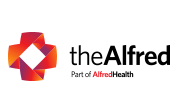Ongoing Management of A Minor Burn Injury
Burns wounds are dynamic and as such, different dressings will be required as the wound moves through different stages of healing.
Frequently in the first 24-72 hours post injury, significant exudate is produced. During this period, an absorbent dressing maybe required. After this inflammatory phase has passed, the wound produces less exudate and a dressing with less absorbency capacity is required. Once the wound is rid of non-viable tissue and healthy tissue is being produced, the aim is to minimise dressing changes which disturb
re-epithelialization.
There is no single dressing that is best suited for the management of all burn wounds. In minor burn wounds which are expected to heal without complication, assess the burn and apply basic wound healing principles to determine the qualities required for a dressing and select from the availability locally and using the clinicians preference.
The table below provides an overview of the overriding wound management principles as the wound moves beyond the acute phase through the stage of healing.
Ongoing Management of Small Burn Injures

Ongoing Management of a Minor Burn Injury
© Copyright 2024 Terms of Use
| Phase | Immediate Phase | Exudative Phase | Destructive Phase | Healing Phase | Maturation Phase |
|---|---|---|---|---|---|
| Time Frame | 0 – 3 hours | 0 – 72 hours | 3 days | 14 days | Up to 18 months |
 Day 1 |  Day 3 |  Day 11 |  2 months |
||
| Wound Management Goals | Stop the burning process Cool the burn | Absorb exudate Preserve damaged but viable tissue Manage oedema | Debride slough and non viable tissue Minimise risk of infection | Protect healing tissue Avoid re -trauma | Appropriate scar management techniques |
| Dressing Qualities | Cool running water up to 20 minutes | Absorbent dressings | Dressings which facilitate debridement Hydrating dressings (if slough is dry) | Protective dressings | Scar reduction |
| Dressing Options | Hydrogels (only if water not available) | Silicones Alginates Foams Hydrocolloids (moderate exudate) Consider silver dressings if deep, infected or contaminated burns | Gels Silver products Flaminal | Silicones Thin weave paraffin Gauze Foam Non-adherent dressings | Unperfumed moisturiser Hypoallergenic sun screen Pressure Garments Cica care Mepiform |




